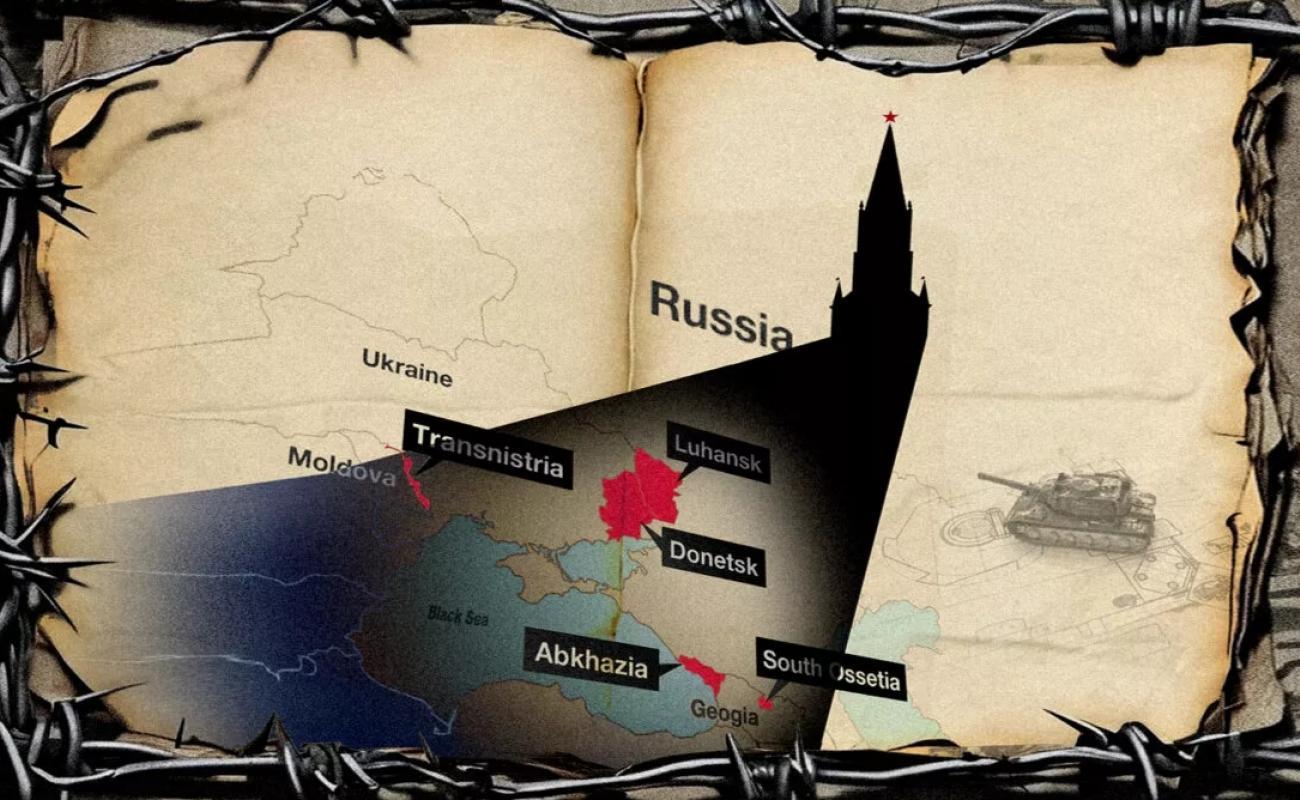Genocide Claims, Peace Enforcement and Proxy Regions: Disinformation from Georgia to Ukraine

From Georgia to Moldova to Ukraine, the Kremlin follows the same playbook: fuel separatism, spread disinformation, and intervene under false pretences.
Moscow has a long track record of invasion, using disinformation and propaganda narratives to support their actions. The most prominent is to express that Kremlin was “forced” to invade. In reality, the pattern is clear: wherever post-Soviet states seek to move toward democratic governance or Euro-Atlantic integration, the Kremlin responds with a playbook of division, occupation, and destabilization. From Georgia to Moldova to Ukraine, Moscow has supported local separatist movements and used military force to create proxy regions, turning them into frozen zones of instability that block its neighbors’ sovereign ambitions.
“Peace enforcement” under false pretences
In August 2008, Russia invaded Georgia under the pretext of “peace enforcement”. The Kremlin accused Georgia of committing genocide in South Ossetia – this claim was later debunked(opens in a new tab) by international investigators, but the truth hardly mattered: the real goal was to further widen the existing rift between South Ossetia and Georgia caused by the ethnic conflict in the 1990s and bring it under Russian control. Today, this region, while formally recognized by Russia (and a few other countries) as an “independent state,” is almost entirely dependent on Moscow militarily, politically, and financially.
A similar scenario played out in another Georgian region: Abkhazia. Backed by Russia since the 1990s, the region was formally recognized by the Kremlin after the 2008 war. Additional Russian troops moved in, and Abkhazia became another entity(opens in a new tab) dependent to a large degree on Moscow, with many key decisions made in the Kremlin. Many attempts to go against Russia’s plans for Abkhazia are met with threats of funding cuts(opens in a new tab). Meanwhile, Russia dangles the vague possibility of Georgia regaining control over the regions as a bargaining chip(opens in a new tab) to lure Tbilisi back into its sphere of influence. To reinforce its grip, Moscow has recently made it easier(opens in a new tab) for the residents of Abkhazia and South Ossetia to obtain Russian passports.
From Georgia to Moldova and Ukraine: the same playbook
In Moldova, the Kremlin has long used the region of Transnistria as a tool of political and military pressure on Chișinău. Russian troops remain stationed there illegally(opens in a new tab), while the Transnistrian conflict serves as a means for the Kremlin to obstruct Moldova’s European and Euro-Atlantic integration. Every election season, tensions rise – just like now, ahead of Moldova’s 2025 parliamentary vote.
The 2008 war in Georgia foreshadowed the Kremlin’s larger-scale playbook in Ukraine. Just as in South Ossetia and Abkhazia, Russia used fabricated claims to prepare the ground for invasion. In both cases, Moscow exploited local tensions, fueled separatism, and then intervened militarily under a false humanitarian pretext. The strategic logic remained the same: deny sovereign nations the right to choose their alliances and futures, while attempting to reestablish a sphere of influence through force, coercion, and manufactured instability.
By invading South Ossetia, Russia initiated the first military conflict in Europe in the 21st century – and it wasn’t to be the last. Many experts agree it served as a test run for the full-scale invasion of Ukraine in 2014 and especially in 2022. Tactics rehearsed in Georgia, such as “humanitarian intervention,” protection of “compatriots,” distribution of Russian passports(opens in a new tab), and massive disinformation, were later deployed in Ukraine.
